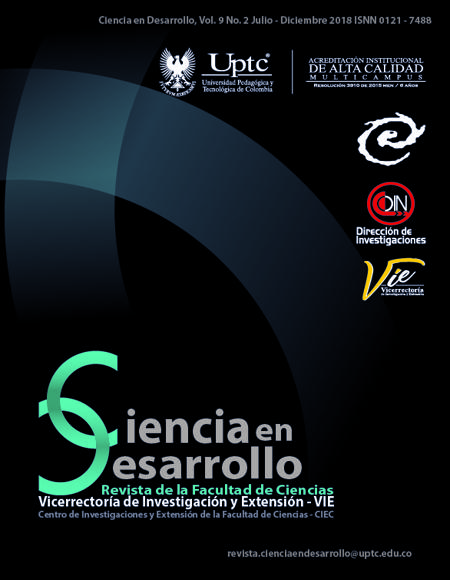Standardization of genetic transformation protocols in Escherichia coli and Agrobacterium tumefaciens for the generation of a collection of gene constructs

Abstract
An important tool in plant genetic engineering is the vectors or genic constructs that contain reporter genes, utilized to facilitate the standardization of genetic transformation protocols. The objective of this study was evaluate genetic transformation protocols for generate in a quick and confinable manner, a base collection of genic constructs in Escherichia coli strain DHα and Agrobacterium tumefaciens strains LBA 4404, EHA 105 y C58, using 25 binary vectors (pSK1019, pMP2482 y 23 de la serie pCAMBIA) that contain the reporter genes gfp and gus, by using the heat shock and electroporation techniques. The transformants confirmation was made by PCR amplification and by restriction enzymes assay with Eco RI and Xho I. These approaches allowed verifying the presence Successful of the 25 vectors inside the used bacteria. The results indicate that it is necessary to standardize the transformation protocols in the bacterial strains to be used because they do not all transform with the same conditions and this work can be a reference for the standardization in other laboratories of genetic transformation when working in a massive way.Keywords
Reporter gen, Electroporation, gene construct, genetic transformation
References
- J. Abello, S. Kelemu, C. Garcia, “Agrobacterium-mediated transformation of the endophytic fungus Acremonium implicatum associated with Brachiaria grasses”, Mycol Res, vol. 112, pp 407-413, Mar 2008. DOI: https://doi.org/10.1016/j.mycres.2007.10.008
- N. Castañeda, J. Chaparro, J. Castellanos, “Tecnología de la clonación y expresión génica en un sistema bacteriano y su aplicación en virología”, Biom, vol. 11, pp 43-53, June 2006.
- J. Diver, L. Bryan, y P. Sokol, “Transformation of Pseudomonas aeruginosa by electroporation”, Analy Bioc, vol. 189, pp 75–79, Aug 1990. DOI: https://doi.org/10.1016/0003-2697(90)90046-C
- S. Domingues, K. Harms, WF. Fricke, P. Johnsen, Pål, G. da Silva, K. Nielsen, “Natural Transformation Facilitates Transfer of Transposons, Integrons and Gene Cassettes between Bacterial Species”, Plos Pathog, vol. 8, pp 1-15, Aug 2012. DOI: https://doi.org/10.1371/journal.ppat.1002837
- T. Durfee, R. Nelson, S. Baldwin, G. Plunkett III, V. Burland, B. Mau, JF. Petrosino, X. Qin, D. Muzny, M. Ayele, RA. Gibbs, B. Csorgo, G. Posfai, G. Weinstock, F. Blattner, “The Complete Genome Sequence of Escherichia coli DH10B: Insights into the Biology of a Laboratory Workhorse”, J Bacteriol, vol. 190 (7), pp 2597-2606, Feb 2006. DOI: https://doi.org/10.1128/JB.01695-07
- AN. Gynheung, “Binary Ti vectors for plant transformation and promoter analysis”, Met Enzym, vol. 153, pp 292-305. 1987 DOI: https://doi.org/10.1016/0076-6879(87)53060-9
- M. Jacobs, S. Wnendt, U. Stahl, “High-efficiency electro-transformation of Escherichia coli with DNA from ligation mixtures”, Nucleic Acids Res, vol. 18, pp 1653, Mar 1990. DOI: https://doi.org/10.1093/nar/18.6.1653
- Madigan M, Martinko J, Parker J. 1999. Brock Biología de los Microorganismos. Octava edición, Madrid, Prentice Hall Iberia.
- B. Pope, M. Kent, “High efficiency 5 min transformation of Escherichia coli”, Nuc Acids, vol. 24(3), pp 536-537, Dec 1996. DOI: https://doi.org/10.1093/nar/24.3.536
- D. Prakash, G. Anish, R. Jagadeesh, D. Chakravortty, “Bacterial transformation using micro-shock waves”, Anal Bioc, vol. 419, pp 292–301, Dec 2011. DOI: https://doi.org/10.1016/j.ab.2011.08.038
- V. Romanenko, RI. Gvozdyak. 1986. Peculiarities of ultrastructure of Agrobacterium tumefaciens cells. Journals Microbiology, vol. 48, pp 49-52.
- Saini R, Jaiwal K. 2005. Transformation of a recalcitrant grain legume, Vigna mungo L. Hepper, using Agrobacterium tumefaciens-mediated gene transfer to shoot apical meristem cultures. Springer Berlin. 24(3): 164-171. DOI: https://doi.org/10.1007/s00299-005-0934-z
- Sambrook J, Russell D. 2001. Molecular cloning a laboratory manual. Edition 3a, New York, Cold spring harbor laboratory press. 1.35-1.37.
- Stanton B. 2003. Agrobacterium-Mediated Plant Transformation: the Biology behind the “Gene-Jockeying” Tool. Microbiology and molecular biology. 67(1): 16-37. DOI: https://doi.org/10.1128/MMBR.67.1.16-37.2003
- Stanton G, Schilperoor R. 1997. Agrobactrium-mediated gene transfer to plant cells. En: Plant Molecular Biology Manual. 8th ed, EE.UU, Kluwer academic publishers, pman-B1/11.
- Utermark J, Karlovsky P. 2008. Genetic transformation of filamentous fungi by Agrobacterium tumefaciens. En: Nature Protocols, http://www.nature.com/protocolexchange/protocols/427; consulta: octubre2011. DOI: https://doi.org/10.1038/nprot.2008.83
- Valderrama Fonseca A, Arango R, Afanador L. 2005. Transformación de plantas mediada por agrobacterium: “ingeniería genética natural aplicada”. Facultad Nacional Agraria de Medellín. 58: 2569-2585.
- Zupan J, Ward D, Zambryski P. 2002. Completion of the Agrobacterium tumefaciens genome sequence opens new opportunities to engineer increased transformation efficiency and broader host range. Nature Biotechonology. 20: 129.131. DOI: https://doi.org/10.1038/nbt0202-129
- Zupan J, Zambrysky P. 1995. Transfer of T-DNA from Agrobacterium to the plan cell. Plant Physiology. 107: 1041-1047. DOI: https://doi.org/10.1104/pp.107.4.1041
Downloads
Download data is not yet available.